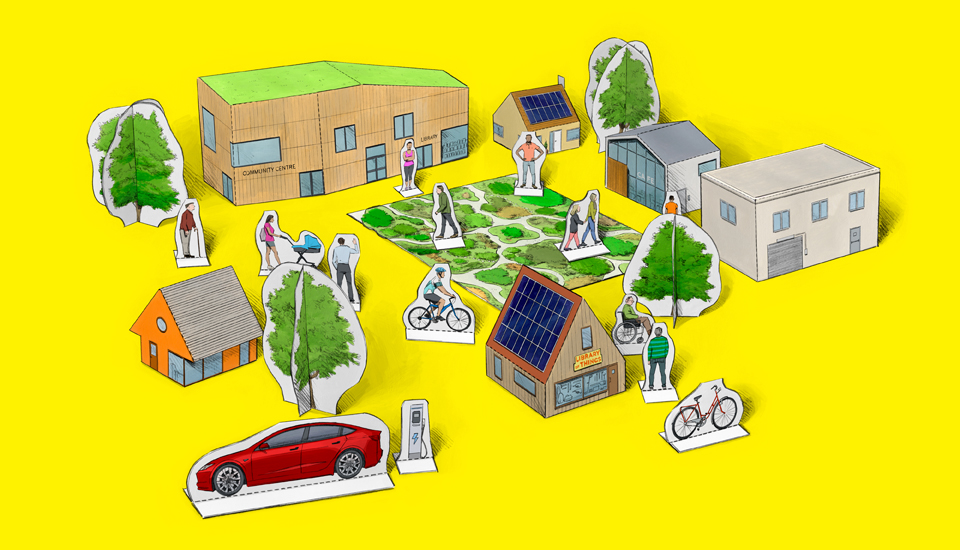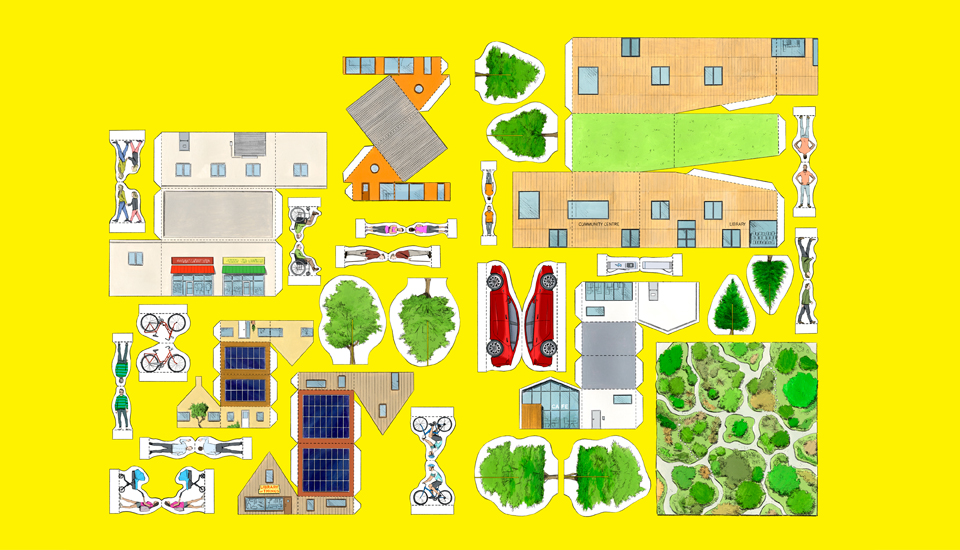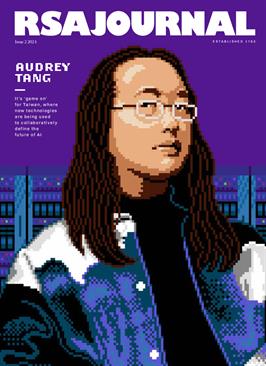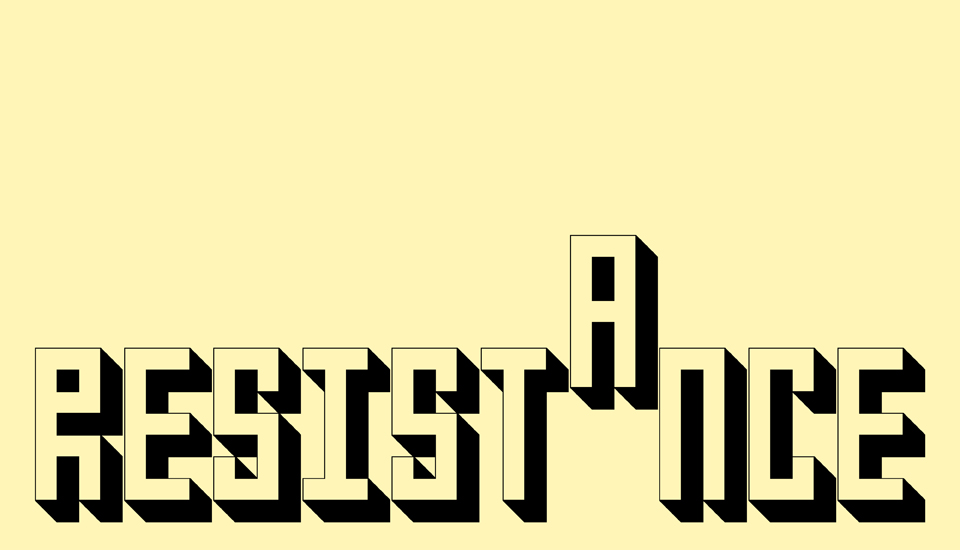
Summary
Vlad Afanasiev of Dark Matter Labs discusses the importance of rethinking governance and metrics to address planetary crises. Current governance models focus heavily on economic and industrial interventions, often overlooking the social innovations crucial for community resilience. Dark Matter Labs developed the Cornerstone Indicators, a framework aimed at empowering citizens to define and measure community impacts. This initiative, piloted in Sweden, combines statistical analysis and community input to create relatable, multi-dimensional indicators that promote civic engagement and resilience.
Reading time
Eight minutes
A new approach to metrics is bridging the gap between scientific measurement and human experience, strengthening civic participation, and laying out a path to thrive through adversity.
What’s the first thing that comes to mind when we think about governance response to unfolding planetary crises? Currently, economic and industrial interventions dominate our public discourse, while innovations in social governance tend to be viewed through the lens of either justice or simply ‘nice to have’. We have known for some time that environmental breakdown, pandemics, the vulnerability of our food systems and inflationary landscapes are events that reinforce each other, producing unpredictable risks and compounding effects, a condition frequently described as a polycrisis. We now also understand that, not only will the polycrisis be most acutely felt by specific communities of place, but that this is also where the most effective response could and should happen.
Community resilience, as part of the broader social capital, is increasingly being recognised as a positive force in the face of these threats. From digital support networks distributing masks during the Covid-19 pandemic in Taiwan or neighbour care groups grappling with heatwaves in Australia or Pakistan, to wide-scale civic resistance against Russian aggression in Ukraine, these inspiring examples show that, when things go sideways, decentralised decision-making and self-organisation can be significantly more efficient than systems of top-down governance.
Unfortunately, our dominant theories of governance are unable to recognise the value of thriving communities capable of action, collective sensemaking and agile planning. They often fail to distribute power to scales and networks that adequately meet the embeddedness and complexity of the challenges before us.
Our institutional and bureaucratic architectures require new forms and procedures of democratic self-governance.
The Cornerstone Indicators
I work at Dark Matter Labs, an organisation that is developing options for the fundamental transition of our economies in the face of the planetary emergency. We believe this transition is impossible without creating governance innovations that position citizens as the main agents of change. Last year, we launched an initiative called the Cornerstone Indicators, which aims to reimagine the role of metrics and indicators to become tools for radical civic empowerment by allowing citizens to decide on what impact in the community they want to see and measure.
Now being developed across multiple locations, the Cornerstone framework was initially prototyped in Sweden in collaboration with citizens of Västerås and Samhällskontraktet, a platform for social innovations operated by the local university and municipality. The nine-month design process started with a statistical analysis that combined best international practices of wellbeing frameworks, such as the Organisation for Economic Co-operation and Development (OECD), the Canadian Index of Wellbeing and New Zealand’s Living Standards Framework. It was then followed by online surveys on local social media groups and the city council’s website asking participants to rank multiple factors themselves. Taken together, statistical and subjective inputs helped us to identify the universal dimensions that are most relevant to communities in Västerås, then group them into different thematic clusters, such as physical safety or trust and security.
Build your own community
What type of neighbourhood would you like to live in? Does it have a playground? A library? A library of things? Artist Graham Samuels has constructed all the components for you to choose from to build your ideal community. So go ahead, take a break (and grab a friend) to either print the image below or cut out the illustrations from your physical copy of the Journal and assemble as you see fit.
We want to see your creations, so make sure to share your photos online using #RSABuildYourCommunity and tag us for a chance to be featured on our social media pages.

Quality of life and societal health should be the starting points from which we operate; this is often forgotten in a system that primarily optimises itself for financial profit and growth.
At the core of the Cornerstone process were several participatory workshops where, over a four-month period, a group of citizens developed and explored different scenarios of how their district might look in 2035. Using visualisations and storytelling, the group was presented with multiple potential ecological and political scenarios. Participants were asked how they would feel and act under different conditions, defining how their collective future might unfold in the limitations and potentials of each case. Finally, all inputs were combined and considered for the design of the first set of indicators, of which five were chosen and have now been adopted by the city.
In contrast to existing impact measures, each Cornerstone Indicator combines and scores across 17 different aspects of wellbeing to create a single intuitive indicator that is easily relatable and has a visual representation that allows it to be understood immediately. For example, one of the selected metrics, ‘The number of households that enjoy not owning a car’, implies a set of factors such as climate awareness, air quality, the state of public transportation, trust and safety of the community, while also conveying a change in attitude and mindset regarding personal mobility.
The main role of the Cornerstone Indicators is not so much to describe municipal performance, state of infrastructure, or behavioural patterns but to give agency and create a shared story of how a community could thrive in the constraints of planetary emergencies. They are not substitutes for global measures, or intended to be used as hard evidence but, rather, they are interfaces and balance points between scientific measurements and our human lived experience. They exist to help us think, listen, reflect and learn.
Beyond wellbeing
Quality of life and societal health should be the starting points from which we operate; this is often forgotten in a system that primarily optimises itself for financial profit and growth. Yet, in the age of polycrisis, wellbeing can no longer be our only aspiration, but must be considered in the context of systemic and sustained risk. In order to thrive and grow through adversity, our theory of democratic governance should include what we think of at Dark Matter Labs as ‘critical capabilities’ of our society. From collective intelligence to civic agency, these are those intangible assets that can be optimised for, invested in, and recognised as no less critical than physical or financial ones in the transition to come.
For example, we need to harness the capacity for sensemaking and collective intelligence of a community, neighbourhood or city to understand unfolding events and navigate uncertain environments. With the rise of artificial intelligence and social media, and the increasing complexity of life in general, it is increasingly difficult to process the landscape of information overload and identify credible facts. How can we redirect attention from the stream of disinformation towards critical knowledge, such as skills for the future transition and mitigation of crises, that communities need?
It is also essential to find a way to imagine a shared future and construct a guiding narrative. We have seen that issues that require the most coordination, such as climate change, pandemics and geopolitical rivalries, also become the most polarising. By designing spaces to hold different opinions and construct a consensus without compromising plurality, we can build widespread civic consent. Without it and the legitimacy it provides to a higher authority, the required transition for liberal democracies is hardly imaginable.
Finally, we need to build agency and decision-making capacity to act for the future on a scale where it is efficient to do so. The complexity of the polycrisis landscape cannot be effectively managed via a centralised, top-down approach. Our governance architecture should resemble the intricacies of natural systems, operating through networks and distributing agency and power closer to the reality on the ground. Only by doing so can we achieve systemic agility and speed required by the high volatility and uncertainty of the future.
The Cornerstone Indicators provide one example of how our governance frameworks, such as metrics, could be redesigned to facilitate the mentioned capacities of society. If we find more ways to build them, they will reinforce each other, becoming more than the sum of their parts and creating the societal context for the necessary transition to happen. The challenges we face are contextual and systemic. Our governance response should be, too.
The original idea for the Cornerstone Indicators concept was co-developed with Katherine Trebeck. Emily Harris, Linnea Rönnquist and Vlad Afanasiev were the core team behind the framework and Swedish pilot project.
Vlad Afanasiev is a strategic designer and researcher based in Berlin.
Graham Samuels is an illustrator and animator living in Stockholm, Sweden.
This feature first appeared in RSA Journal Issue 2 2024.
pdf 12.5 MB
Read more last word features from the RSA Journal
-
Last word: resistance
Vibha Venkatesha
One young activist’s growing understanding of the shifting landscapes of opposition and power – and how best to effect meaningful change.
-
Last word: action
Matt Winning
Comedian Matt Winning on environmental action and why we all need to prepare for our personal climate journey.




Be the first to write a comment
Comments
Please login to post a comment or reply
Don't have an account? Click here to register.